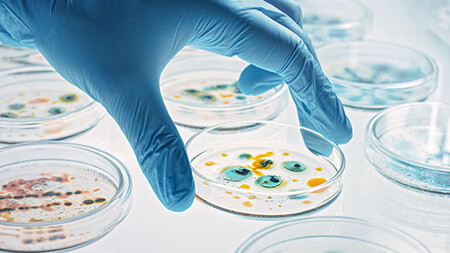The Rising Threat of Antibiotic Resistance: What Patients Need to Know
The Rising Threat of Antibiotic Resistance: What Patients Need to Know
Antibiotics are medications designed to kill or inhibit the growth of bacteria, which helps our immune system fight off infections. The discovery of antibiotics was a medical milestone that revolutionized how we treat illnesses and infections. For many years, antibiotics were the first line of defense to help treat infections, but in the last several years their effectiveness has been decreasing. This is known as antibiotic resistance.

Antibiotic resistance (AR) is one of the most urgent threats to public health. Each year in the United States, at least 2.8 million people are infected with antibiotic-resistant germs¹. Without antibiotics, even simple infections could become deadly. Let’s learn more about AR and what can be done to prevent it.
How Antibiotic Resistance Occurs
When antibiotics are used to treat an infection, they target and kill the bacteria causing the illness. However, some bacteria may possess genetic variations that make them resistant to the antibiotic’s effects. When these resistant bacteria survive the antibiotic treatment, they can multiply and spread, leading to more resistant strains. These strains might be resistant to one specific class of antibiotics or multiple different antibiotics and can become incredibly difficult to treat.
Antibiotic resistance can develop due to several factors, including overuse or inappropriate use of antibiotics, not finishing the prescribed course, and the extensive use of antibiotics in agriculture.

Consequences of Antibiotic Resistance
Antibiotic resistance poses a severe threat to global health and can have devastating consequences, such as:
- Harder-to-treat infections
- Prolonged illnesses
- Increased healthcare costs
- Potential pandemics
Some infections are already becoming resistant to antibiotics. These infections are a serious threat to our health system and can be deadly, especially for patients with certain health conditions. The Centers for Disease Control (CDC) has identified the following pathogens as urgent threats in terms of drug resistance ²:
- Carbapenem-resistant Acinetobacter
- Clostridioides difficile
- Carbapenem-resistant Enterobacterales
- Drug resistant Neisseria gonorrhoeae

How Patients Can Help Combat Antibiotic Resistance
Patients play a crucial role in curbing the rise of antibiotic resistance. Using antibiotics appropriately and responsibly can help prevent antibiotic-resistant organisms. It is important to remember that antibiotics do not work on viruses like colds and flus. Your healthcare provider will order lab tests to identify and treat the germs responsible for your illness. Taking the complete course and using antibiotics as directed, when they are necessary, and practicing good hygiene are things we can all do to mitigate this serious threat. Regularly washing hands and following vaccination schedules can prevent illness and prevent the need for antibiotics.
For more information
Antibiotic resistance is a global health crisis that demands immediate action from all of us. By using antibiotics responsibly and practicing good hygiene, we can contribute to preserving the effectiveness of these life-saving drugs. Let’s work together to safeguard our health and the well-being of future generations from the threat of antibiotic-resistant pathogens. Remember, a world without effective antibiotics could take us back to a time when even minor infections were life-threatening. For more information, visit the CDC’s website.
REFERENCE
¹ Centers for Disease Control and Prevention. (2021, December). Antibiotic Resistance: 5 Things to Know. U.S. Department of Health and Human Services.
² Centers for Disease Control and Prevention. (2019, December). Antibiotic resistance threats in the United States. U.S. Department of Health and Human Services.